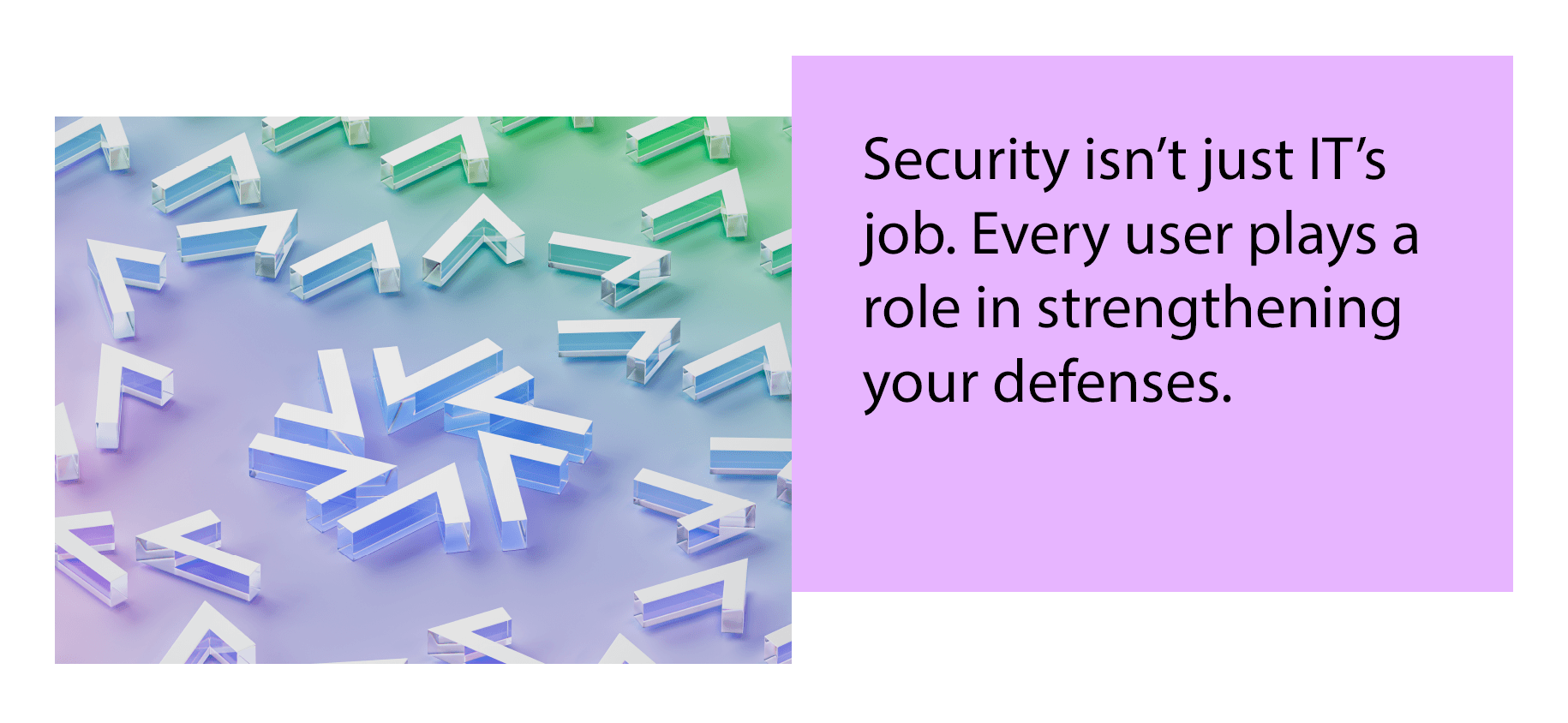Most Breaches Start with Human Error—Here's How to Fix It

Picture this: A fake email lands in your employee’s inbox. It appears to come from a legitimate vendor, and the request for information seems straightforward. So your user clicks a link—and now a cyberattacker has full access to your data and documents.
This is how easy it is for an organization to get hacked.
Human error has now surpassed technology flaws as the leading cause of data breaches. According to one report, an astounding 95% of breaches involve human mistakes.
In other words …
Your organization’s biggest security risk isn’t sophisticated attack techniques or emerging tactics. It’s your users. Despite multi-million-dollar investments in cybersecurity, organizations of all sizes remain vulnerable.
Let’s take a closer look at why and how this happens, and what you can do about it.
Why Your Users Are Your Top Security Risk
Today’s attackers don’t hack. They either log in or quietly slip past your defenses, undetected and undeterred. They’re highly skilled at exploiting vulnerabilities and tricking users and know how to take advantage of your employees’ mistakes. It’s why most breaches can be traced back to several common, risky behaviors:
- Weak passwords: Six in ten employees “often” or “always” reuse the same password across multiple accounts, and many of them are easy to crack.
- Misdelivery: An estimated 60% of all error-related breaches happen because an employee sends sensitive information to the wrong recipient, leading to accidental data sharing.
- Use of unsanctioned apps: Research indicates that at least 50% of applications have serious exploitable vulnerabilities, particularly in industries like healthcare and public services. Yet many employees still share sensitive files using unauthorized applications, often on unprotected personal devices.
- Neglected Updates: System updates and software patches exist for a reason—they better safeguard your technology against the latest threats. But many employees are desensitized to them, choosing to delay or ignore prompts altogether. In fact, 32% of ransomware attacks happen because of unpatched vulnerabilities.
- Security Shortcuts: An astounding 65% of employees admit to frequently bypassing security policies to boost productivity and make their lives easier. They forward corporate emails to personal email accounts, use personal devices as Wi-Fi hotspots and access work apps on non-work laptops.
How Attackers Exploit Human Error and Oversight
As a result of these and other behaviors, employees frequently fall prey to tried-and-true attacker techniques. Common tactics include:
- Phishing: This refers to emails, texts or calls where the attacker poses as a legitimate entity, with the goal of tricking users into providing sensitive information or installing malware.
- Spear phishing: Even the savviest employees fall prey to spear phishing attacks, which involve extensive research to craft highly personalized emails, phone calls or social media messages that appear to come from a colleague, supervisor, known business partner or other trusted source.
- Business email compromise: Attackers use this technique to impersonate executives or trusted partners and send fake requests. Because they are difficult to detect, BEC attacks frequently trick employees into sharing confidential data and documents.
- Social engineering: These attacks focus on exploiting human emotions such as fear, curiosity and trust. Think of the urgent password reset request that appears to come from your organization’s IT department—it works because it pressures your employee to make a split-second decision, before they have time to question the legitimacy of the message.
Once the attacker finds a vulnerability or tricks your user into granting access, they can move through your system for months—the current average is 292 days—before you know it’s happening. The resulting financial loss, reputational damage and customer trust erosion can be devastating. In fact, the global average cost of a single data breach is now at a record high of $4.9 million.
Best Practices for Preventing Human Error
Let’s face it—your technology is only as secure as the people using it. And it’s up to you to bring them up to speed on the latest security strategies. Here are three proven ways to do just that.
1. Invest in Engaging Education
The most common cause of human error? Lack of awareness. Many users simply don’t know how to recognize the signs of threats. For this reason, education should be your top priority. If you don’t already conduct cybersecurity training programs, now’s the time to start.
But don’t just check a box. Create training content that’s highly engaging and relevant. Regular phishing simulations, up-to-date threat briefings and security-awareness programs all play a role in convincing people to take cybersecurity seriously. When in doubt, look for ways to gamify the experience or provide rewards for participation.
2. Implement Smart Safeguards
Remember, your users aren’t trying to get hacked. They just want to get work done. If your security protocols make it hard to achieve their goals, they’ll prioritize convenience over compliance. You can minimize these risks by choosing tools designed to reduce the likelihood of human error—without causing friction. Look for features like built-in encryption, AI monitoring and threat detection.
3. Create a Security-First Culture
The sooner you know about a potential breach, the faster you can work to contain it. Which is why it’s so important to create a culture where employees feel comfortable reporting honest mistakes and speaking up about suspicious activity. Make sure your workforce knows what to report and when. Better yet, look for opportunities to proactively recognize and reward secure behavior.
Protecting Your Organization Against Modern Threats Is Everyone’s Job
Security isn’t just IT’s job. Every user plays a role in strengthening your defenses. By prioritizing awareness, simplifying secure behavior and fostering a culture of accountability, you can significantly reduce your risk of a security breach.
As evolving threats continue to reshape the security landscape, now’s the time to equip your teams with the right tools and knowledge.
Looking for more tips? Download the free ebook for best practices when choosing secure tools and technology: Your Guide to Modern Data Security.
Related Resources


